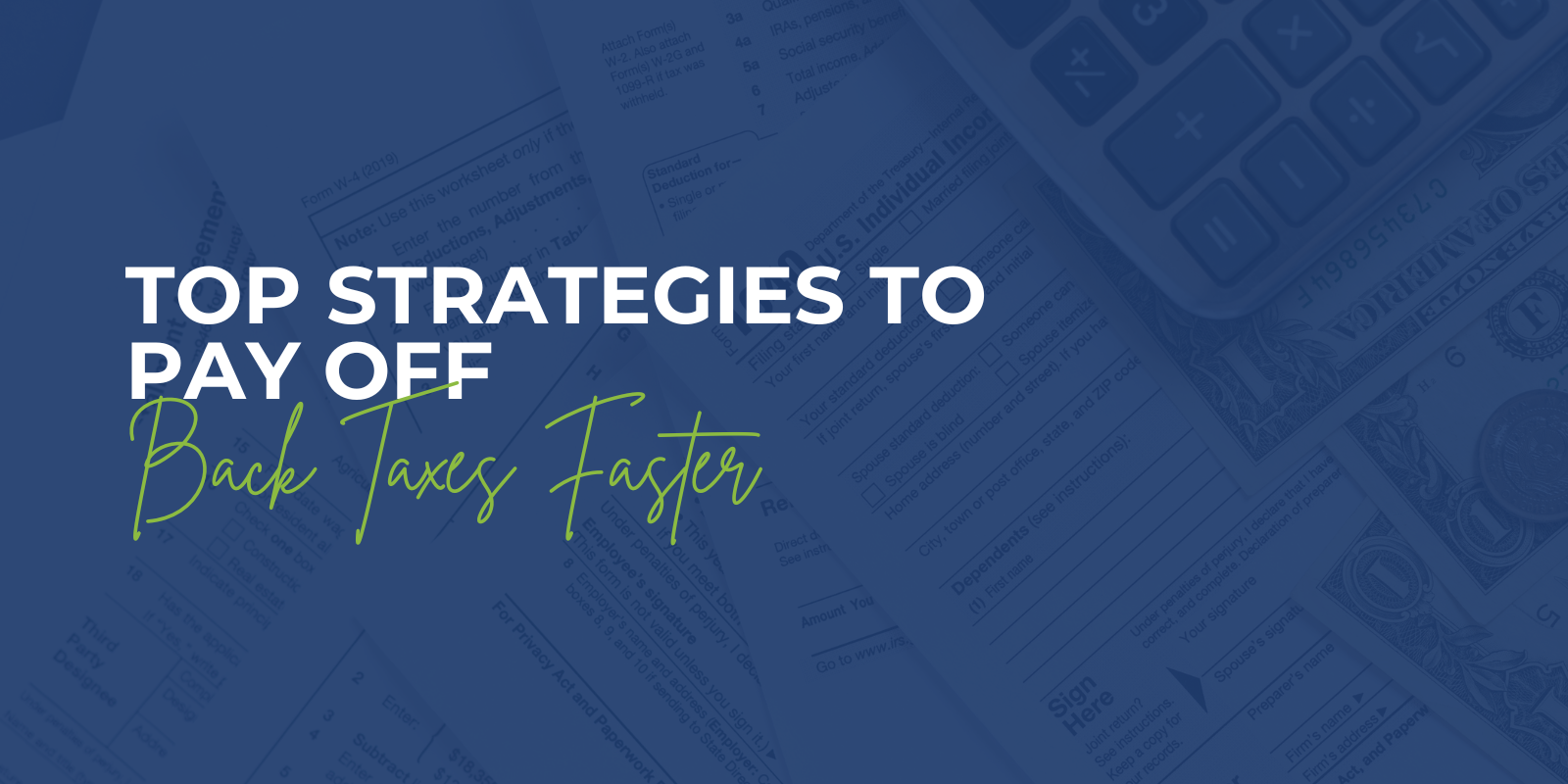Owing the IRS can be one of the most stressful situations a taxpayer can face. Recent data shows that American taxpayers owed over $316 billion in back taxes, penalties, and interest as of the end of 2022. Much of this debt can be attributed to late filing, mathematical errors, and underreported income. Whatever the reason for owing taxes, many taxpayers may find themselves considering tax relief when their tax bills get too large to pay. Here’s an overview of what tax relief is and how it works.
What Is Tax Relief?
The IRS recognizes that not all taxpayers can pay what they owe in full, so they offer different avenues to settle or reduce tax debt based on individual circumstances. The phrase “tax relief” can mean many things. When speaking of tax debt, tax relief is when your tax debt is managed, settled through negotiations, or paid down with payment plans. Tax relief programs were created for taxpayers who cannot afford to pay their tax bills, as well as those who have overwhelming and overdue tax bills.
How Does Tax Relief Work?
Tax relief is not a “one-size-fits-all” program. Every tax relief program works differently, and the process will also differ depending on the individual taxpayer’s situation. Here we will review the most common tax relief policies and programs.
Offer in Compromise (OIC)
Previously called the Fresh Start program, an offer in compromise is the most popular form of tax relief as well as the least likely option for taxpayers since most OICs are denied by the IRS. An OIC allows you to settle your tax debt for less than what you owe. When selecting OIC candidates, the IRS will examine your ability to pay your tax bill, your income and expenses, and the value of your assets. There are three types of OICs:
- Doubt as to Collectibility: When there’s doubt the IRS could collect the full debt.
- Doubt as to Liability: When there’s uncertainty about the correctness of the tax debt.
- Effective Tax Administration: When collecting the full amount would be unfair or cause economic hardship.
Applying for an Offer in Compromise involves a detailed process, beginning with completing IRS Form 656, “Offer in Compromise.” Alongside this form, taxpayers must submit a comprehensive financial statement detailing income, expenses, assets, and liabilities. There are some basic requirements for an offer in compromise including:
- Must pay a $205 nonrefundable application fee
- Must make a nonrefundable initial payment
- Must be current on all tax returns
- Must not be in an open bankruptcy proceeding
If the IRS deems that you cannot afford to pay your tax debt, or that paying your tax debt will result in financial hardship, then it may accept your offer in compromise. If this happens, they will cease collections.
Currently-Not-Collectible (CNC) Status
In some cases, you cannot afford both your tax bill and your expenses. If this happens, you can request a Currently Not Collectible status on your account, which delays collections. The IRS will request information regarding your income and expenses to determine your eligibility. If approved, the CNC status will temporarily cease collections on your account. However, they will continue to assess interest and penalties to your account. They will continue to review your income each year to determine if you are still eligible for CNC status. They can also still file a tax lien against you during this time and keep your tax refunds to apply them to your tax bill.
IRS Installment Agreement
If you can’t pay your tax debt in full but don’t qualify for an OIC, an IRS installment agreement may be a practical solution. An IRS installment agreement lets you pay your tax bill, plus accrued interest and penalties, over a set period of time in monthly installments. There are different types of installment agreements:
- Guaranteed Installment Agreement: If you owe $10,000 or less and meet other criteria, the IRS is required to grant this agreement.
- Streamlined Installment Agreement: For tax debt of $50,000 or less, you can qualify without submitting detailed financials.
- Non-Streamlined Installment Agreement: For tax debt of more than $50,000, you can qualify based on financial information you provide to the IRS.
- Partial Payment Installment Agreement (PPIA): This allows you to pay a reduced amount monthly if you cannot afford the full payment but do not qualify for an OIC.
While an IRS installment agreement does not reduce your tax bill, or exclude you from penalties and interest, it might be your next best option to pay off your tax debt.
Penalty Abatement
Sometimes life gets in the way of responsibility. Maybe you didn’t file your taxes for one year, or you forgot to pay your tax bill. Perhaps you were affected by a serious illness or natural disaster. If you have an otherwise clean record with the IRS, you can request a first-time penalty abatement, which waives a tax penalty or refunds you for one already paid for. Typically, if you meet three requirements, you should qualify for this tax relief option.
- You are current on your tax return filing. Tax extensions are fine.
- You are current on your tax bill or have a payment plan in place.
- You have a clean record with the IRS. This means no penalties during the three tax years before the year you received a penalty.
If interest accrued from a failure-to-pay or a failure-to-file penalty, and you receive penalty abatement, then the interest associated with the penalty abatement will also be forgiven.
How Do I Proceed with Tax Relief?
If one of these tax relief options sounds like they can be of help to your tax situation, you should consider pursuing it. Most of these options require nothing to lose, financially speaking. Dealing with the IRS on your own can be intimidating, time-consuming, and stressful. Working with a tax professional offers several advantages over handling IRS matters independently. For one, tax professionals have expertise that goes beyond basic tax knowledge. This can help you minimize errors, save time and money, and optimize your tax planning. Perhaps the greatest benefit is knowing that a professional is handling the IRS on your behalf. Optima Tax Relief is the nation’s leading tax resolution firm with over $3 billion in resolved tax liabilities.
If You Need Tax Help, Contact Us Today for a Free Consultation
Publisher: Source link










